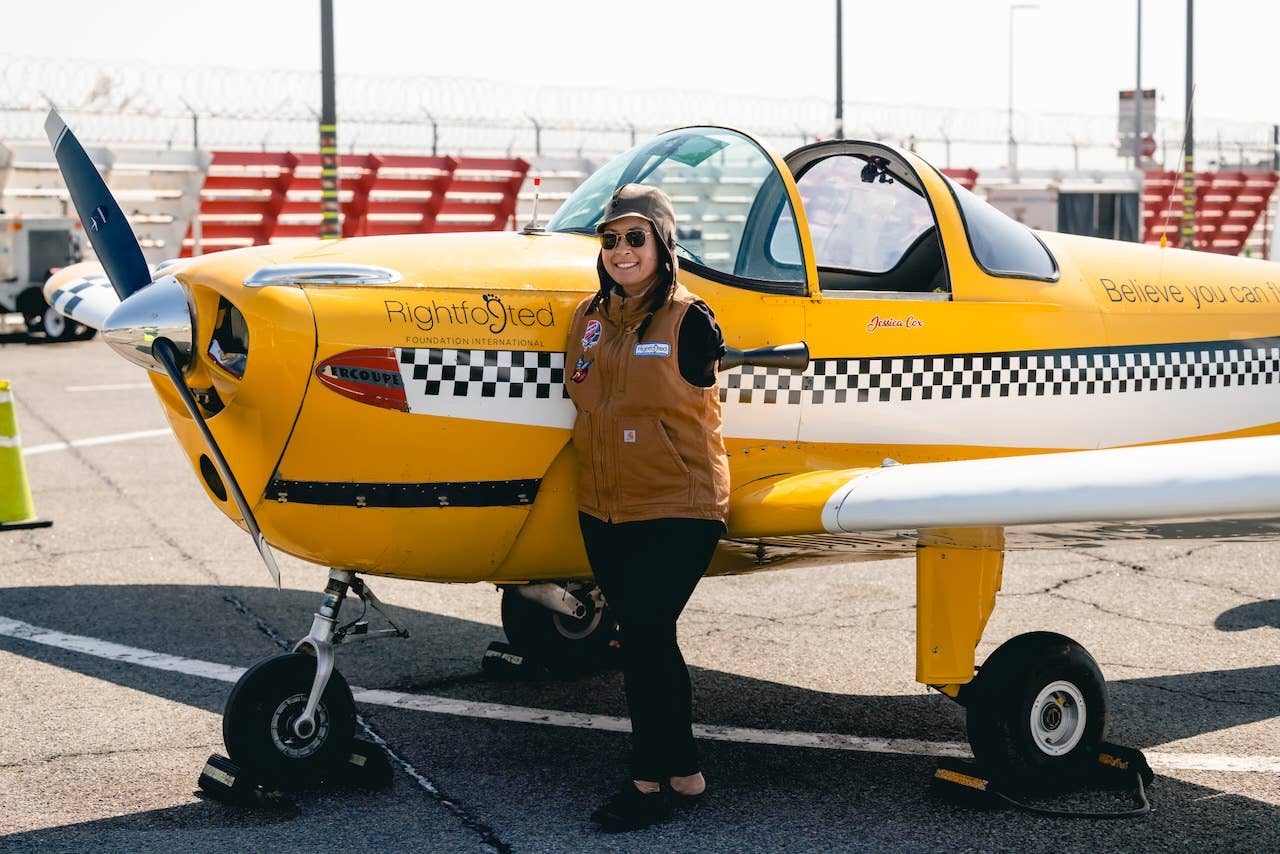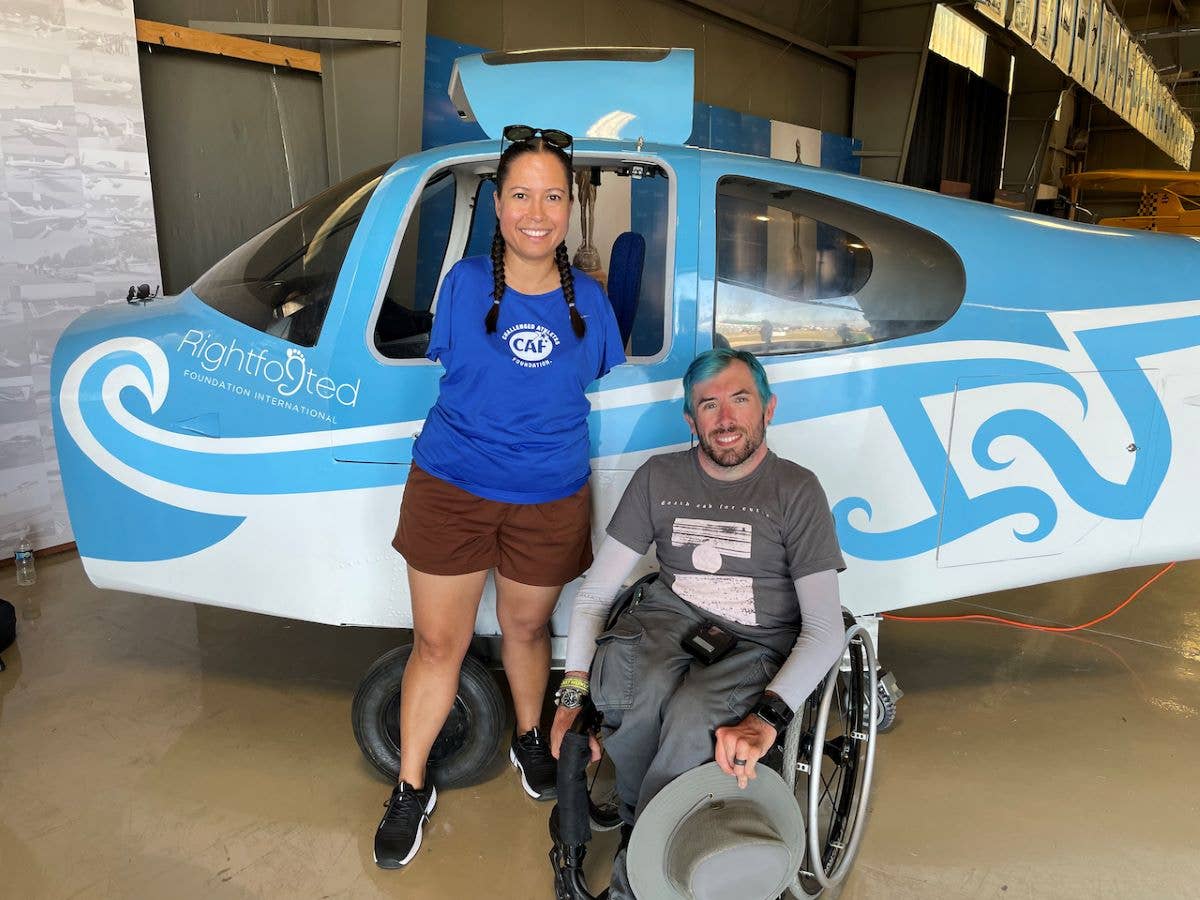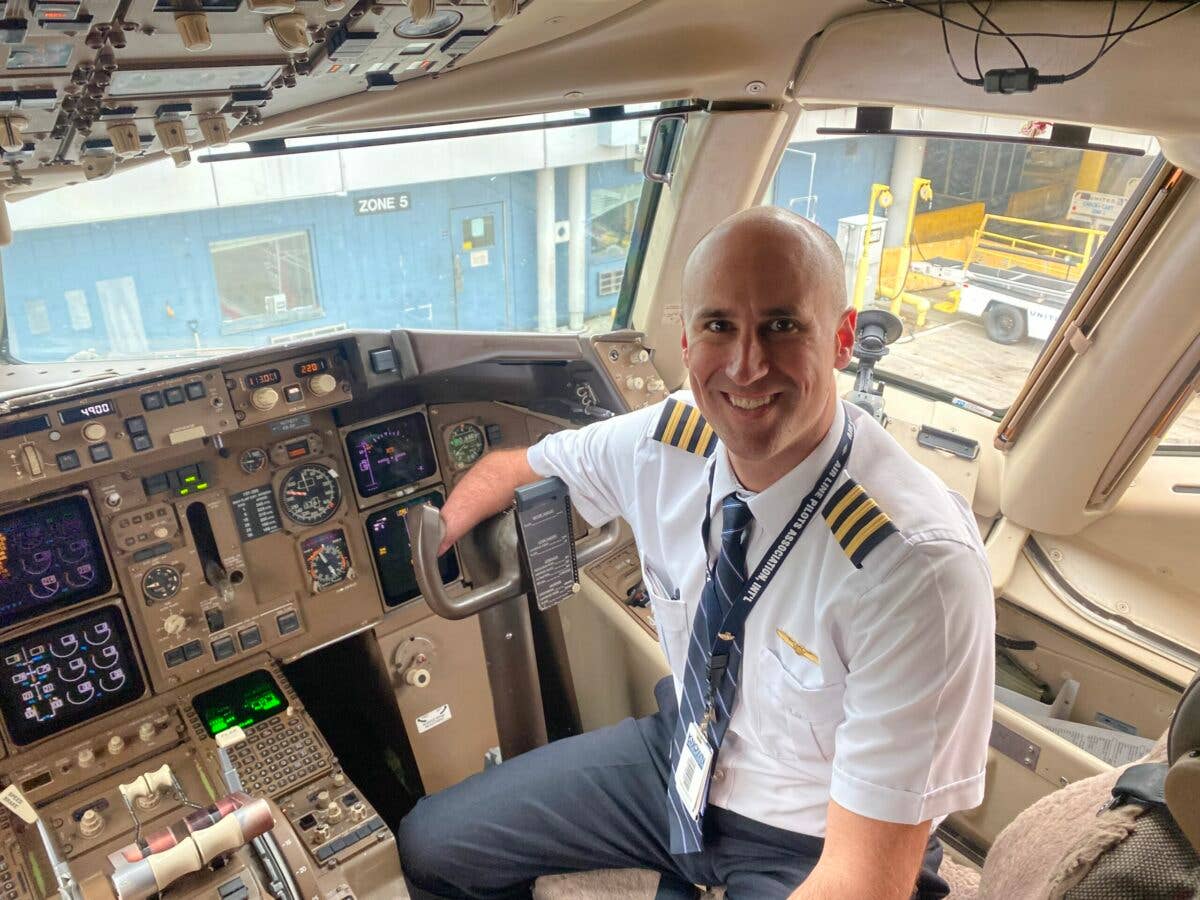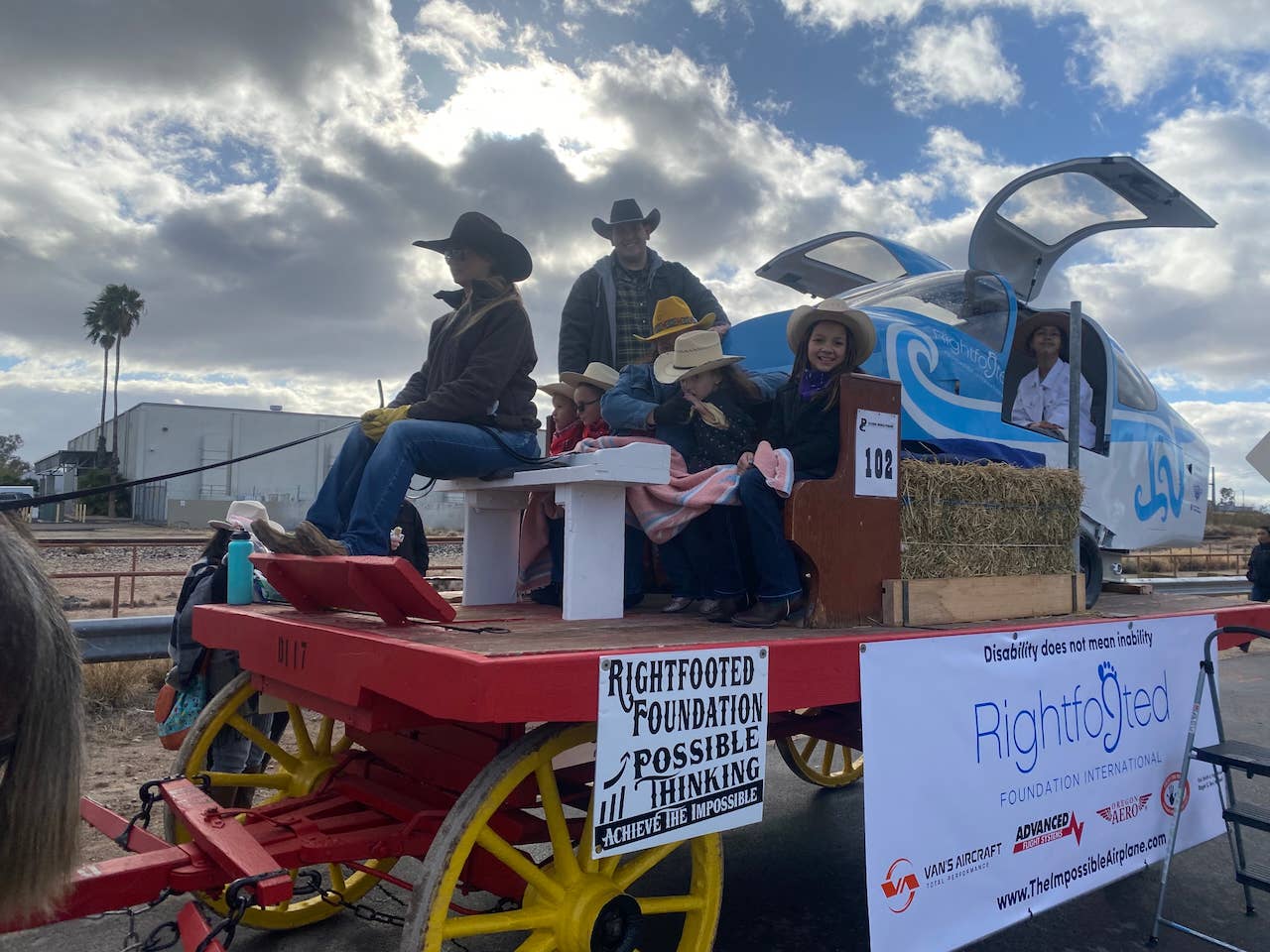Engineering Opportunities for Pilots With Disabilities
A former fighter pilot who became the first paraplegic to build and fly a helicopter offers inspiration for others.
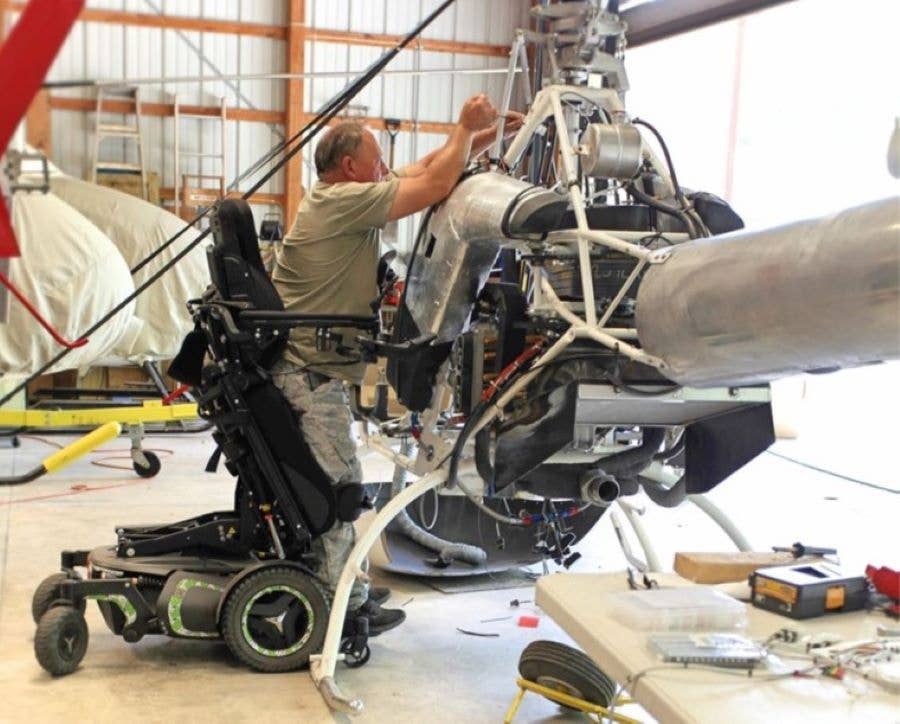
Retired Captain Stewart McQuillan in his standup chair building his helicopter. [Photo provided by: Jessica Cox]
When I sat down to lunch recently with retired Captain Stewart McQuillan in Colorado Springs, Colorado, it would have been easy to notice a woman without arms and a man in a wheelchair—two people with disabilities having a meal together. I doubt anybody would have known they were looking at two Guinness World Record holders together in one place.
Stewart once served as a Royal Air Force/U.S. Air Force fighter pilot who had to retire after his fighter plane broke up on takeoff, crushing his spine and leaving him paralyzed. He returned to aviation as soon as possible, flying fixed-wing aircraft with hand controls.
In 1997, he was approached by King Hussein of Jordan to create a helicopter that could be flown by people with paraplegia. Because he is also an engineer, that challenge was right up his alley. At that time, he had already developed blueprints for glider flight with paraplegia. In 2002, his helicopter modification device was certified, and Stewart became the first paraplegic to fly a helicopter and the first to build one. He is now on his fifth helicopter.
“Helicopters are like crack cocaine, and I became a junkie,” he said.
I was honored to be in his presence and eager to ask him questions. When trying to accomplish a goal, it is always a good idea to find someone who has done something similar and try to learn from them. Stewart debuted his one-of-a-kind helicopter at EAA AirVenture last summer, just like we are showcasing the Impossible Airplane simulator in a couple of weeks at this year’s Oshkosh, Wisconsin, annual event. There are so many details to share about Stewart, however, I want to focus on the building and engineering aspects of his life in aviation.
He said the biggest challenge in aviation building is trying to explain your vision to somebody unable to get into your mind. Inventing something that has never been done is difficult because you first have to get people to understand what you are trying to do to make it a reality. And without a precedent, that requires some imagination—and a lot of explaining. In his projects, he was able to figure out things by trial and error and stumbled across a system that worked. This is a lesson I’ve also learned. When you start on a project, you hope the journey is smooth sailing, but that is most often not the case. Success is a collection of the lessons learned when our trials result in errors.
The Impossible Airplane
Thus far, we’ve been able to figure out some control designs for pitch, roll, and yaw, plus an automatic door for the Impossible Airplane. It’s easy enough to test the door. I just hit the button a million times while my husband and others try to come up with every conceivable scenario that could break it, and we keep improving from there.
Flight controls are a little harder. We built a simulator to test ideas—first to see if I like them, and then to see if they provide enough input to control an RV-10. When we’ve designed a system both experts and I like, we will install it in a full-size fuselage simulator for further testing. Following Stewart’s example, we will keep changing and improving the design as necessary before installing it in the final airplane. By the way, if an idea springs to mind, please send it to my team here.
Steering the conversation toward another topic, I asked him about the challenges he faces because of his disability. He said his frustration is that people fail to see the person—they only see the wheelchair. Oh, how I know this to be true! Luckily, some people like Stewart push past the barriers and show others that it can be done.
Stewart has been working on a project with his Air Force friends. They want to visit 24 Veterans Affairs spinal cord injury centers with his helicopter to bring hope to patients and establish a training program for veterans, helping them rediscover life’s joy in new vocations, including aviation. This resonates deeply with me because this is exactly what we’ve done for children with disabilities, previously with the Ercoupe and more recently with the Impossible Airplane simulator at the Tucson Rodeo Parade in Arizona, where we hitched the simulator to our float and took children with disabilities along for a ride with us.
I am so glad to know Stewart and hear his story. I know I found a kindred spirit in him. We share the vision of a world where disability opens doors instead of closing them. Just like me, he found his wings despite his disability. And in our unique ways, we are helping others find theirs.

Sign-up for newsletters & special offers!
Get the latest FLYING stories & special offers delivered directly to your inbox

